Welcome back to Auto For Dummies, the column that the whole world envies us.
Our aim is to explain the secrets of the automotive world in a simple way, and today we answer a rather frequent question: what are car segments?
Often, in fact, when a friend or a friend asks me for advice for a new car and I ask for the segment he had in mind, he / she promptly falls out of the pear tree. “What does segment mean? I don't know what segment I want "
So today we explain this simple distinction, used for all car models for sale in the world.
From the smallest and cheapest to the most luxurious and bloated, today we line them all up.
Are you ready? Let's start!
READ ALSO: Km0 cars: what are they? Do you really save money? | Auto For Dummies
How to divide cars: the European car segments
The car segments were born relatively recently, to be able to homologate the cars for sale under a single wording.
Until a few years ago, in fact, in each country there were different terms.
A car the size of a FIAT Punto, for example, was defined "Utilitarian" in Italy, “supermini” in England e “Sub-Compact” in America.
The desire to standardize this definition led to the mention by the European Commission of a division by Segments.
In each Segment, cars of different sizes, from the smallest to the largest: this division is contained in a ruling brought to the European Commission during a 1999 trial concerning the overlapping of Hyundai and Kia products.
This division, however, has never been transformed into law.
Although therefore this type of division is very widespread for its convenience and immediacy of understanding, it is not mandatory in all EU countries (and not only) to use this system.
The division into car segments then does not take into account the level of equipment or performance of a car, so they are not watertight compartments.
In any case, having these categories in mind makes you understand the car market better, the protagonist cars and the salient features of each Segment.
So let's see in detail the various car segments and how they are made up.
Segment A: city cars or "super utilities"
Let's start with the first car segment, the most widespread and the smallest of all, the Segment A.
The smallest cars fit into this category, which do not exceed 3,80 m in length and intended primarily for the city.
In English these cars are in fact defined “city-car”, while the ancient Italian distinctions called them “superutilitarie”.
These are intended for daily use in mostly urban and working contexts, equipped with 3 or 5-door bodywork and small and economical engines.
Traction is almost always front, with some exceptions that use all-wheel drive (FIAT Panda and Suzuki Ignis, for example) or rear, like Renault Twingo and Smart, which have engine and drive behind.

The most widespread car in Italy is part of the A segment, FIAT Panda, the city car par excellence.
Small, easy to park and practical, she is THE Segmento A in Italy.
But together with more or less direct rivals such as Volkswagen up!, Toyota Aygo, Hyundai i10 and similar, smaller cars such as Smart ForTwo and Toyota iQ, or more glamorous and neat cars like MINI 3 door o FIAT 500.

Typically, A-segment cars are also mechanically simple, preferring small gasoline engines and manual transmissions.
In recent years, however, turbo engines and automatic transmissions have also been making their way here.
There is also no shortage of sports versions of cars in this category, such as Abarth 500, Volkswagen Up! GTI or the very powerful MINI JCW GP with 306 HP.
However, making a car in this segment is very expensive and the revenues are very low for the manufacturers, which is why many competitors are gradually leaving the game, or decide to focus on electric versions.
According to many experts, in fact, the future of Segment A is electric, being cars intended for purely urban use, and with electric motors it is possible to offer more interior space in confined spaces thanks to the very compact components.
An example of this is the debut in an all-electric version of the new FIAT 500.

I prices? The average is between 10 and 15 thousand euros, with the cheapest from the price list, Citroen C1, offered at 9500 euros, up to the over 50 thousand of the MINI GP.
READ ALSO: MINI John Cooper Works GP, the most extreme Brit is ready to hit the track
Segment B: the "utilitarian" or small cars
The second of the car segments we encounter is the Segment B.
This category is superimposable to those that were once called "Utilitarian".
Cars that do not exceed 4,10 meters in length, but which offer more space, comfort and equipment than the smaller Segmento A.

Cars like FIAT Punto, the most famous in Italy, Volkswagen Polo, Renault Clio, Ford Fiesta, Peugeot 208: all these cars are part of Segment B.
Car with 3 or 5 doors, large tailgate and plenty of space for things and people.
Traction is almost always delegated to the front wheels, with very rare exceptions of all-wheel drive, as Suzuki Swift or the extreme GR Toyota Yaris.
This is one of the main categories of the car market, so much so that it alone covers 22% of the Italian market in 2020.
This is because, in Italy as in Europe, cars of this size are able to offer 4 comfortable seats, with the ability to accommodate 5 people if necessary, a good trunk and an adequate level of performance and comfort to be used at 360 degrees. . Thanks to their size, they are also suitable for European cities, which are narrower and more congested than their American or Asian counterparts.
In recent years, this car segment has made a real leap in quality.
By now all Segment B have various turbo engines in the range, a lot of technology for entertainment and safety and a space comparable to the saloons of a decade ago.
As engines, until a few years ago there was an intensive use of diesel engines.

With the birth of par and economical turbo petrol engines, the latter have become the norm, without forgetting gas engines and the increasingly popular hybrids.
This segment, called in Anglo-Saxon countries "supermini", is also one of the most prosperous for the birth of compact sports cars.
Cars like Ford Fiesta ST, Volkswagen Polo GTI, or the upcoming Hyundai i20 N are all "vitaminized" Segment B, also known as Hot hatch.
I refer you to our article where we talk about the best cheap sports: there you will find bread for your teeth!

Finally, if the Segment A are almost the same as each other in shape and type of bodywork, in Segment B we begin to find some variety.
In fact, there are cars like the Lancia Ypsilon which, even if it is part of Segment B, has very compact dimensions, almost like… Panda.
Same thing goes for Suzuki Swift, which with its 3,84 meters is one of the shortest Segment B.
Finally, although these are now out of fashion, there is no shortage of family members derived from Segment B cars.
Although their dimensions are decidedly greater than 4 meters and 20, they are considered "Wagon of Segment B", such as Skoda Fabia Combi or Dacia Logan MCV.
I prices? The cheapest is Dacia Sandero which starts at just 7.950 euros, while the most expensive on the list is Toyota GR Yaris, the 260 HP bomb with a price list set at over 40 thousand euros.
However, the average is between 18 and 25 thousand euros.
READ ALSO: Best low cost sports cars: which one to buy if you love to drive
Segment C: the compact
If we had to choose only one of the car segments, perhaps we would choose the Segment C.
Compact but already very spacious cars, with length between 4,20 and 4,50 meters, a lot of practicality and many features, both from the point of view of the engines and from the technological one.

The queen of this car segment is undoubtedly Volkswagen Golf, the best-selling car in history.
The second in the world sales ranking is, coincidentally, another Segment C, Toyota Corolla.
In fact, all over the world the ability of Segment C cars to offer space and practicality without exceeding the dimensions is rewarded by sales that are nothing short of fantastic.
Practice has it that Segment C cars are once again cars a two volumes with 3 or 5 doors, tailgate, practicality and comfort.

But here they are different interpretations on the subject.
Three-volume cars also fall within Segment C (i.e. with the tail clearly visible at the rear) as FIAT Type 4 doors, Skoda Octavia o A3 Audi Sedan, car suits that exceed 4,50 meters but fall within Segment C.
Same goes for the Station Wagon based on cars in this category, such as Ford Focus SW, Renault Mègane Sporter and so on.
In any case, these compact sedans, also known simply as compact, are among the most popular in Italy among the families, who see in their ability to offer space and practicality in small dimensions the perfect first car of the house.
Engines chapter. If until a few years ago the favorite engine was the diesel one, today turbo petrol, gas (LPG or methane) and hybrid engines are very popular.
In recent years there has been one transversal diffusion of the automatic transmission in this range, while the mechanical setting is slightly flattened.
If until a few years ago there was BMW 1 Series which represented the only rear-wheel drive C-Segment, today the vast majority of cars in this category are front-wheel drive, with the presence, it must be said, of different four-wheel drive configurations on many suitors.

There are also sports versions, which find fertile ground here.
Some of the best sports cars ever come from this Segment, including some legends like Volkswagen Golf GTI, Ford Focus RS or Renault Mègane RS.
Almost all Segment Cs have their own peppery version, from the more "lukewarm" as Mazda 3 SkyActiv-X up to real bombs like Honda Civic Type-R o Audi RS3.
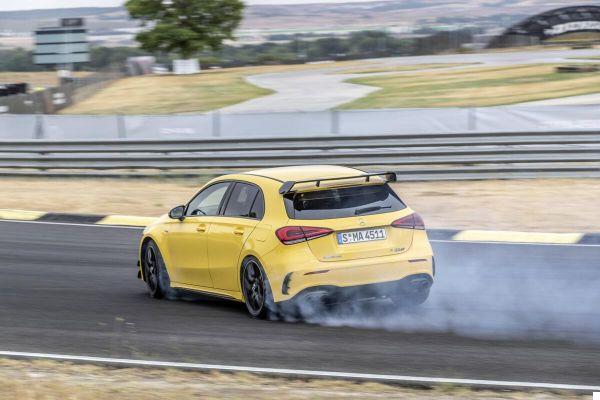
Prices are very variable, because here we meet for the first time the struggle between "generalist" and "Premium" cars. Cars "generaliste”Are made by manufacturers with large sales numbers such as Ford, Toyota or FIAT and that point to substance and practicality.
The products "PremiumInstead, like those of BMW, Mercedes, Volvo, Audi and so on have more refined and refined equipment and finishes and more powerful engines, with consequently higher prices.
As a rule, however, for the “generalist” Segment C we are between 23 and 30 thousand euros in the list, with the Premium ones between 28 and 45/50 thousand euros.
The cheapest in this segment is Skoda Scala, with a starting price of 20.000 euros. The most expensive? Mercedes A45 AMG, capable of 421 HP but also 63 thousand euros!
Il Segmento D: the sedan medie
We raise the letter, and also the bar of prices and contents.
We arrived at the letter D, which prefigures the segment of midsize sedans and station wagons.
The cars of Segment D in fact they have dimensions between 4,60 and 4,80 meters, with some contenders coming to touch 5 meters (we'll get to this point later).
The two volumes also end with segment D: in fact, the Segment D cars are all hatchback sedans with a tail, or station wagon.

The best interpreter of this segment in terms of sales in Italy is BMW Serie 3, closely followed by German rivals Audi A4 e Mercedes C-Class.
If until a few years ago there were many generalist Segment D, in recent times this category has become almost exclusively a monopoly of Case Premium, especially German.
The car segment of the midsize sedans is in fact full of premium cars only: the three "German", Volvo S/V60, Alfa Romeo Giulia, Jaguar XE, Lexus IS.
The so-called "4 door coupe”Like Audi A5 Sportback, Peugeot 508 or BMW 4 Series Gran Coupè.
Generalist rivals with dimensions less than 4,7 meters are no longer available, and the various Ford Mondeo, Volkswagen Passat, Skoda Superb or Opel Insignia are decidedly larger, with dimensions that exceed 4,8 meters by momentum.
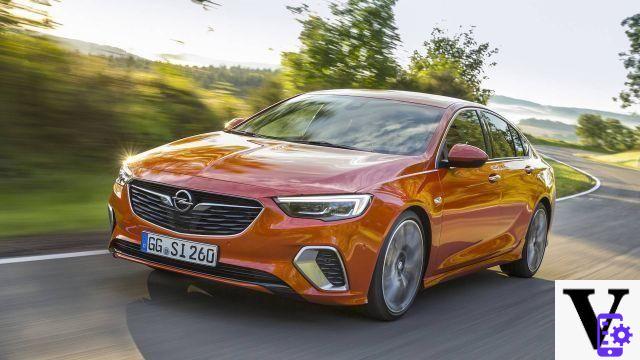
In this car segment, therefore, the price and the level of finishes and features are taken into consideration rather than size. The "midsize" sedans are therefore all premium, and they deal with the "generalists" of more generous dimensions, which respond to quality and power with space and comfort.
The difference is also seen in the mechanical setting: the "premium" cars tend to have rear or all-wheel drive, while the generalists focus on front-wheel drive cars, or of course all-wheel drive.
Finally, the powers rarely fall below 150 HP.
Despite the negative period, moreover, the main engine in this category is still diesel, given the traveling nature of these cars.

For the first time in our journey through the car segments, then, we see engines with more than 4 cylinders: the sedans and SW of the German "triad" in fact also offer petrol and diesel engines a 6 cylinders, over 250 hp.
And every now and then we also see some V8...
Here is a riot of high-performance versions, here is the embarrassment of choice.
There are the “lukewarm” sports cars like Opel Insignia GSI or BMW M340i, or bombs like Mercedes C63 S AMG, equipped with a 4.0 HP 8 V510, or the very Italian Alfa Romeo Giulia Quadrifoglio.
The prices are therefore definitely commensurate with the level reached: the cheapest is the Peugeot 508, which with the 1.5 HP 130 diesel starts at around 31 thousand euros.
The average of the segment, however, is around 40 thousand euros in the list for the "generalists", and over 50 for the Premium ones.… The most expensive? Mercedes-AMG C 63 S, which with its V8 exceeds 100 euros in momentum!
READ ALSO: BMW 3 Series Touring test drive: the icon of the Bavarian house is renewed
Segment E: the large sedans
We are approaching the real luxury car segment with the cars of the Segment E.
These are for all intents and purposes representative sedans: opulent, rich, very well made and driven by very powerful engines.
The bodies are hatchback sedans and station wagons, with dimensions greater than 4,80 meters and less than 5 meters.
For this reason, by now, the presence of sedans of non-premium brands is reduced to a flicker.

In addition to the beautiful German sedans BMW 5 Series, Mercedes E-Class and Audi A6, in fact, they find a place Jaguar XF, Lexus ES e GS, Volvo S/V90, Maserati Ghibli is… Kia Stinger.
The Korean sedan alone is the representative of the "generalists" among Premium sedans.
Until a few years ago, however, among the Lancia Thesis, Citroen C6 and Peugeot 807 and a few others, there was no lack of attempts to rival the Germans.
The remaining rivals, however, keep faith with the level. The list prices are all above 50 thousand euros (with very few exceptions), the traction is almost always rear and often the engines have 6 or more cylinders.
Indeed, there is no shortage of 8-cylinder engines, such as those found under the hood of the very high-performance versions of these sedans: BMW M5, Audi RS6, Mercedes E63 AMG.

Here, too, diesel is king, and the space is also suitable for larger families.
As long as they are wealthy: the cheapest is Jaguar XF, whose starting price is set at 47 euros, with the Kia Stinger just over 48.500 euros.
Lthe average for a well-equipped Segment E is between 50 and 80 thousand euros for a 250/300 hp turbodiesel version.
The most expensive? Maserati Ghibli Trofeo: its 8 HP V580 guarantees it a price of over 135 thousand euros.
Segment F: the flagships
We have reached the end of the segments proper with the Segment F, the most luxurious and unattainable.
In fact, within this segment we find all the most luxurious and technological cars in the world, the so-called flagships.

Car bodies of over 5 meters, cutting-edge technology in every car on the list, leather, wood, precious materials.
Here we are at the top of world motoring, and in fact even top-level brands come into play.
In fact, among the representative sedans we find the "usual" BMW 7 Series, Audi A8 and His Majesty Mercedes S-Class, but also Jaguar XJ, Maserati Quattroporte, Lexus LS, Bentley Flying Spur, Porsche Panamera, up to the gifts Rolls-Royce Ghost e Phantom.

There is no real spending ceiling. The "starting point" is in fact about 100 thousand euros for the "basic" versions (although these are also incredibly equipped), and for some the limit is the sky, with figures that easily reach 200, 300, even 400 thousand euros.
The mechanical basis, apart from very few exceptions, is rear or all-wheel drive, with 4, 6, 8 and even engines 12 cylinders.
The powers? The more "calm" have 250 HP, while at the top it easily breaks through over 600.
In fact, the most powerful is Porsche Panamera Turbo S e-Hybrid, which combines a petrol V8 engine with an electric one to reach beyond 680 hp.
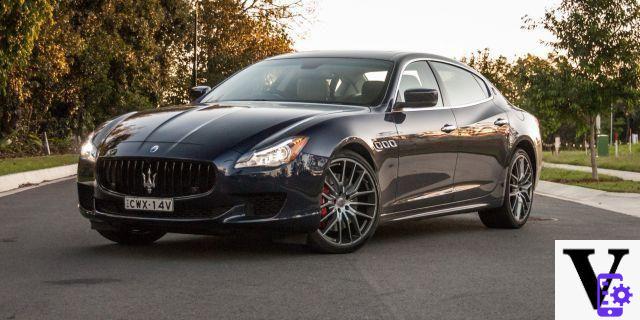
This is the highest level, the top: the technologies we all know today have debuted here. ABS, Adaptive Cruise Control, night vision, electric seats - it all debuted here.
And who knows that the future of the car in this generation of cars is not found today between automatic parking via remote control, rear passenger head airbags and OLED headlights.
The sports: they are there too, all together passionately
We are done with the traditional auto segments, but they still remain categories "forgotten" by this nomenclature.
For these cars it has been remedied by creating ad hoc categories that know how to welcome them, starting with athletic.
We are talking about niche products, that put emotions and driving before practicality and space.
This is why they deserve a separate category, all to themselves, which goes beyond the other car segments.
However, this category does not include the sports versions of cars from other segments, which, as we have seen, “participate” in the traditional car segments.
In this category we find the coupé, sports cars and dream supercars, of all shapes, powers and prices.
This category therefore includes both cheaper sports cars such as Toyota GT86, A o Porsche 718 cayman, both the comfortable and stylish coupes, and the real supercars.

Within the wording "sports" there is also a subdivision that fans have been doing for decades.
On the one hand we have the "quiet" coupe, or cars derived from sedans or compacts as precisely Audi A5, Mercedes C-Class coupe or Lexus RC.
Then we have the small sports, dedicated to appreciating pure driving like Alpine A110, Subaru BRZ or the already mentioned A.
Then there are the Gran Turismo, cars with really powerful engines but still comfortable and cared for, like Ferrari Roma, Mercedes-AMG GT, Jaguar F-Type o BMW M8.
We then come to the real ones supercar: cars with very powerful engines, often in a central position, capable of 0-100 accelerations well under 4 seconds and dizzying lap times on the track.
Car like Ferrari F8 Tribute, McLaren 720S, Porsche RS 911 GT3, Lamborghini Hurricane.

Then there is a last category, the Hypercar. Here the goal is to go as fast as possible, without excuses or other distractions.
What does it mean to go fast on the track, like McLaren Senna o Porsche 918 Hybrid, or on the obverse as Bugatti Chiron, or on both occasions, like Lamborghini Aventador o Ferrari SF90 Stradale.
Prices?
Toyota GT86 is the cheapest with its 31 thousand euros, but for a sports car with several hundred horsepower we are talking about figures even at 5 zeros.
Up to even 6 zeros.
The convertibles: wind in your hair from 15 to 350 thousand euros
Another of the “unified” car segments is that of convertible, or better "convertible".
In this category they belong all cars equipped with a retractable roof, whether it is in canvas or metal.
This amplitude of inclusion means that the widespread one belongs to the same category FIAT 500C and the absurd Aston Martin DB11 Volante.

Whether they are sporty or “walking” convertibles, whether they are dedicated to sporty driving such as Mazda MX-5 or peaceful French Riviera cars like Mercedes Classe S Cabrio, which have 2 or 4 seats, always find a place here.
As a result, the FIAT 70C goes from 15.000 HP and 500 euros to the almost 800 and over one million euros of the Pagani Huayra Roadster..
A nice list of cars, very heterogeneous but always with a single common denominator: driving it with the wind in your hair.
MPVs: minivans, now somewhat forgotten
Then there is another segment that "groups" everything under a single category, those of MPV.
MPV is an acronym that means “Multi-Purpose Vehicle”, which in Italian we can define as minivan.
If you haven't heard this word for a while, we don't blame you: now the good old minivans are a real market niche.

But for those looking for space, practicality, low running costs and a good guide, they are an excellent choice. And many today are beautiful too!
If, however, during the 2000s, minivans were of all types, shapes, brands and sizes, today they have become a rare commodity.
For this, the "minivan" category no longer makes many distinctions.
Inside the small ones, the big ones, those derived from commercial vehicles and the giant ones.
For this reason, today within the "minivan" range we find super practical products such as Dacia Lodgy o Peugeot Rifter. We find commercial vehicle derivatives such as Peugeot Traveler.
We also find large minivans such as Ford S-Max, Volkswagen Sharan o Renault Espace.

Then there are those that are perhaps the best minivans ever for driving, finishes and attention to detail, that is BMW Serie 2 Active Tourer e Mercedes Classe B.
Engines are usually always Diesel for the maximum power to carry things with you, and with powers between 100 and 200 hp.
I prices? It starts from just over 10 thousand euros with Dacia Dokker, up to 50 thousand with Mercedes B250e plug-in hybrid.
For SUVs, there are custom car segments!
I can read your perplexity: e i SUV?
Here, the SUVs were traditionally declined in a single car segment, the Segment J, later called simply a SUV. Here both off-road vehicles and real SUVs found their place, with fine interiors and lots of power.
However, after the crazy expansion of the high-wheeled car market, this definition was now narrow.
Given the success of SUVs and crossovers, therefore, 5 specific categories have been created that we list below.
These are inspired by the division into car segments, but with slightly different dimensions and features.
The characteristics are always the same: high car body, high seat and ability to tackle gravel roads. Sometimes even with all-wheel drive.
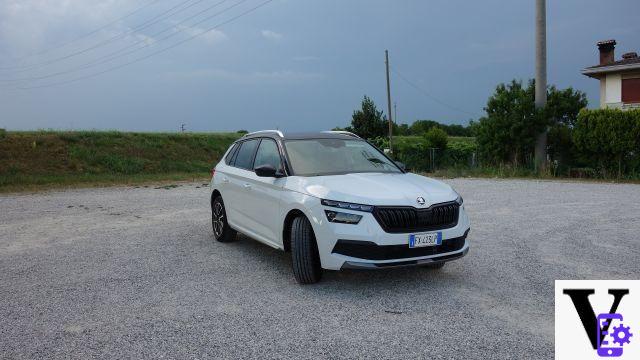
- B-SUV: these are the smallest SUVs and crossovers. In fact, the dimensions range from 4 meters up to 4 and 30 meters, joining the "traditional" Segments B and C.
Within the “B-SUV” category, distinctions are then made between the “Small” and “big” B-SUVs.
The first category includes Volkswagen T-Cross, Skoda Kamiq, Renault Captur and Hyundai Kona, for example. The second instead Volkswagen T-Roc, Audi Q2, Jeep Renegade, MINI Countryman.
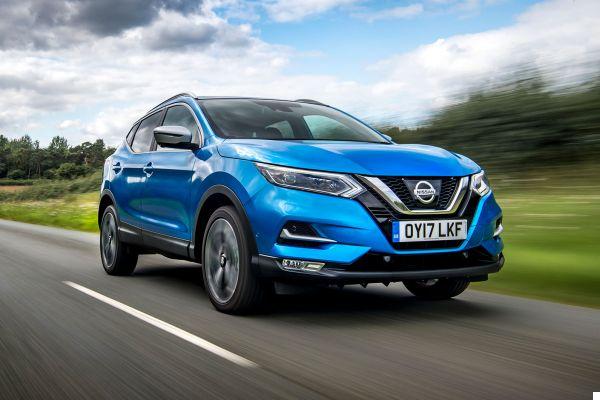
- C-SUV: these are the SUVs that until a few years ago were the most popular, with dimensions greater than 4 and a half meters. The founder of the SUV movement is part of this large family, Nissan Qashqai, and many others. Whether generalists SEAT Ateca, Hyundai Tucson, Volkswagen Tiguan, Jeep Compass, Peugeot 3008 or Premium such as Audi Q3, BMW X1, Mercedes GLA.

- D-SUV: here we find the SUVs with dimensions over 4,7 meters, with 5 or 7 seats and plenty of space available.
Among the D-SUV we include generalist cars such as Renault Koleos, Hyundai Santa Fe, Jeep Cherokee, Citroen C5 Aircross, and Premium such as Alfa Romeo Stelvio, BMW X3, Audi Q5 the Jaguar E-Pace.

- Big SUV: they are the largest and most expensive SUVs. The dimensions easily exceed 5 meters, and include "small" like BMW X5, Jaguar F-Pace, Porsche Cayenne or VW Touareg but also mega SUVs such as BMW X7, Bentley Bentayga or Audi Q7.

- SUV Coupe: as for coupé cars, coupé SUVs are included only for their "ability" to have a descending roof. We therefore find small SUV coupes like Audi Q3 or the even smaller Renault Arkana, or powerful and opulent SUVs like BMW X6, Porsche Cayenne Coupè, Lamborghini Urus.

- Cross-country vehicle: anything that has high wheels but is not an SUV.
Traditionally, off-road vehicles are considered to be cars that still have a side member frame, different from the load-bearing body of all other SUVs.
An example? Suzuki Jimny, SsangYong Rexton, Mercedes G-Class. A market niche, but beloved by off-road enthusiasts.
Traditionally, i pickup, although these are not (at least in Italy) homologated as cars, but as simple trucks.
From A to E and back, the journey between the car segments
With this latest examination of the world of SUVs we have finished our journey through the car segments.
The car world is a world full of facets, compromises and choices.
Having fixed points is therefore important to know how to best untangle in the midst of 487 models and over 10 thousand set-ups on the Italian list.
Knowing how to make sense of the various car segments, from A to F up to sports cars and SUVs, is therefore essential to understand and choose your car in the best possible way.
Were we able to explain everything to you in the best possible way? We really hope so!
So don't miss the next installment of Auto for Dummies which will be a little more technical than this. Until next time!
Discount
 The competitive strategies of the auto sector in the face of ...
The competitive strategies of the auto sector in the face of ...
- Pellicelli, Giorgio (Author)
 All the presidents' cars. Stories of flagships, ...
All the presidents' cars. Stories of flagships, ...
- Romano, Antonio (Author)
 How to build a car. Stories of screws, nuts and bolts ....
How to build a car. Stories of screws, nuts and bolts ....
- Sodomka, Martin (Author)


























